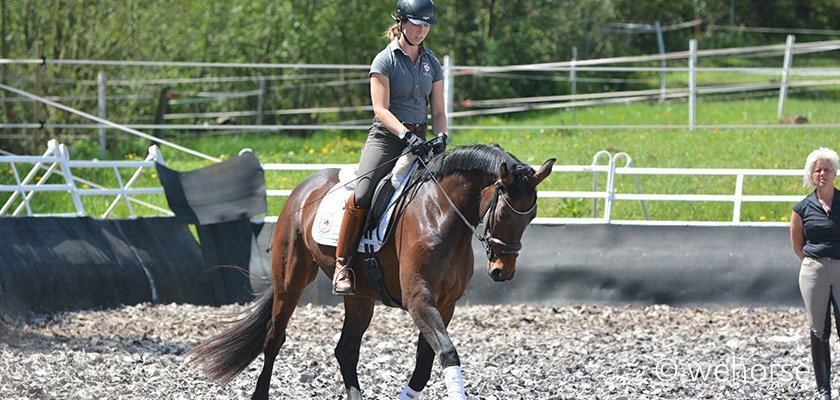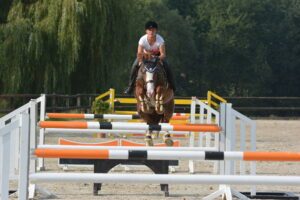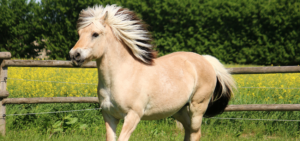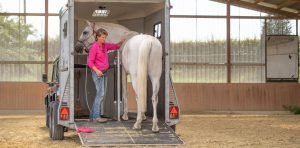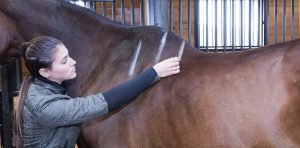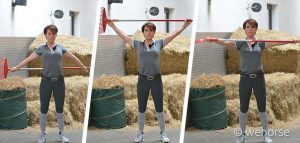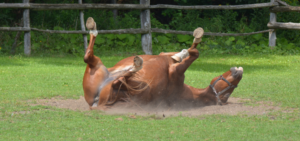This is Part 2 of young horse training at Gut Rothenkircherhof. In Part 1, Stefan Schneider explains how he gets young horses accustomed to being tied and led, and to the saddle and the saddle cloth. Stefan Schneider is the husband of dressage instructor Uta Gräf. He’s also a veterinarian, and has devoted himself to the areas of working equitation and training young horses from the ground. Before mounting is practiced, his horses become familiar with being girthed up and to the physical contact of the stirrups. Every young horse goes with Stefan Schneider out into the countryside in the long reins before being mounted by a rider.
Summary
- Preparatory work on the ground
- Mounting for the first time
- The hazards of mounting blocks
- Advantages in competitions
- The appropriate aids
- How long does it take to break in a young horse?
- Training “raw” young horses
Preparatory work on the ground
The preparatory exercises discussed in the training of young horses are essential for all that comes now. The ability to move the hindquarters can be a lifesaver in difficult situations. The control halter continues to serve as an important component of the young horse’s training. The first time that a horse is mounted by a rider happens in the Gräf-Schneider stable, alone, and involves just the rider and the horse, with no other people assisting. This is done intentionally: ‘We’ve had the best experience this way’, says Stefan Schneider.
How to mount the young horse for the first time?
When training young horses to accept a rider, the procedure is as follows: if the rider wants to mount from the left, they take the left rein as if asking for flexion to the inside. They now put their left foot into the stirrup but go no further, because the first mounting exercise is done without swinging the leg over. Their free right leg gives the horse an impulse to move his hindquarters. The horse is to turn around, like in a turn on the forehand. The horses know this task from groundwork. The only thing that’s new is that the rider places their foot in the stirrup and therefore their weight in the saddle. ‘Here it’s important that the horse’s back stays relaxed. The rider should be able to control every step and the horse relaxes more and more through this work.’ This method of training young horses is safe ‘because the rider can exit the situation immediately, they can jump off and use the inside rein to regain control.’ If the horse has too much forward momentum, the rider can make a small circle to control the horse’s speed.
Are mounting blocks a good option?
Stefan Schneider views a mounting block as more hazardous than useful: ‘The danger is that the horses walk into them. If we use one, then it’s a plastic box or a polystyrene step which won’t injure them.’ When training young horses it’s out of the question that the horse moves while the rider is mounting, for example, to release tension. Stefan Schneider doesn’t see the presence of a second person, standard in many places when practicing mounting, as a safe option when training young horses: ‘If a helper stands at the horse’s head and the horse wants to move at all costs, then that person can’t stop the horse!’ With his method, the young horses go around in a circle. ‘Our trainers can vary the training. If the horse moves his hindquarters so well that the tension is released, the trainer will at some point put their leg over his back and sit atop him. The horse continues in the circle, the hindquarters continue to yield, the head is towards the inside.’
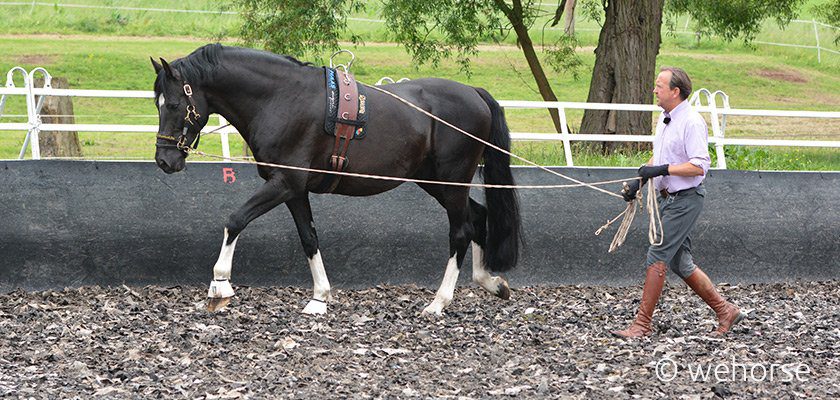
Peace of mind at competitions
Stefan Schneider and Uta Gräf also like to use this method with their team in advanced young horse training, for when things get exciting. ‘I have to read the horse’s body language exactly, even if I have a young horse who’s been successfully under the saddle for three quarters of a year.’ Then, for example when there’s competition coming up, a strange place where things are a little hectic – then Schneider’s trainers make use of this method for hazard-free mounting. ‘It becomes dangerous when people start to think “Oh, he won’t do anything, we don’t need these or those precautions anymore.”’ ‘I can also manage young, excitable horses with our mounting methodology. If there is a problem, then bring the head to the inside and move the hindquarters – this keeps the situation safe and under control.’
Back to the first mounting: when the trainer sees that the horse is more relaxed and that they therefore no longer need to keep doing leg-yielding on a small circle, they’ll increase the radius: ‘If I see that he’s well behaved, then I can straighten him out’, says Stefan Schneider.
Which aids are used in training?
The horses know the kissing sound as a signal for going forward from their groundwork. ‘At the beginning, we ride Australian style, with the legs very far forward’, says Schneider. The horses are already accustomed to the reins from their work in the long reins. It’s important that the lead goes over the withers instead of behind the croup, like in traditional long-reining. He likes to use a grab strap to secure the outside rein and lets the inside rein hang free. ‘In an emergency I can let go of the outside rein and turn the horse’s head to the inside’ – this works as a kind of emergency brake.
How long does it take to break in a young horse?
Normally, after three months of training, including groundwork in hand, walk, trot and canter, young horses can then be taken out and ridden. This is when they start basic dressage schooling. Uta Gräf and Stefan Schneider’s trainers begin this schooling, and then Uta Gräf takes over at some point. ‘San Diamond came to us as a three-year-old to be broken in; our trainer instructed him and now Uta now rides him at advanced level’, Schneider says.
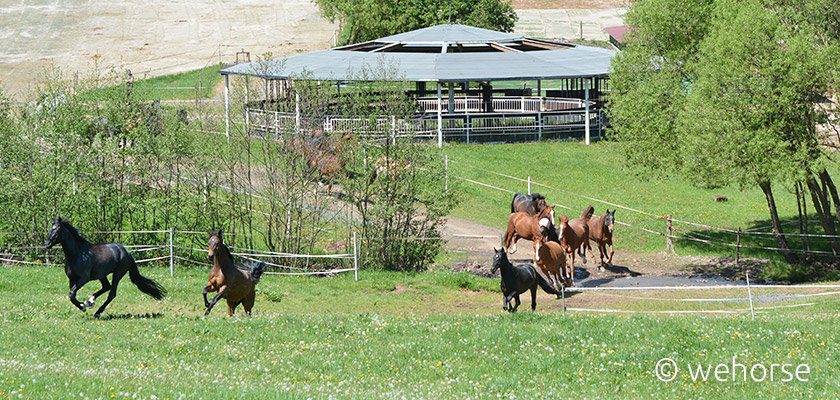
Training “raw” young horses
The trainers prefer to work with young horses that have no experience whatsoever. They themselves like to buy horses reared on the “Thürengeti”, a vast expanse of open land in the German state of Thuringia. ‘They are by far the easiest to handle: no one has interfered with them, they have had abundant social contact, they are wonderful!’ says Stefan Schneider. If a young horse has had bad experiences or has bucked riders off, then ‘that sets us back; the instruction simply must last longer in the beginning, and we must reach into our bag of tricks.’
At home, Stefan Schneider and Uta Gräf subscribe to natural horsekeeping – all horses go out to pasture. This too contributes to a well-balanced horse, and is one element of the whole package. The image above shows some of their horses, which even as sport horses are turned out with the herd.

